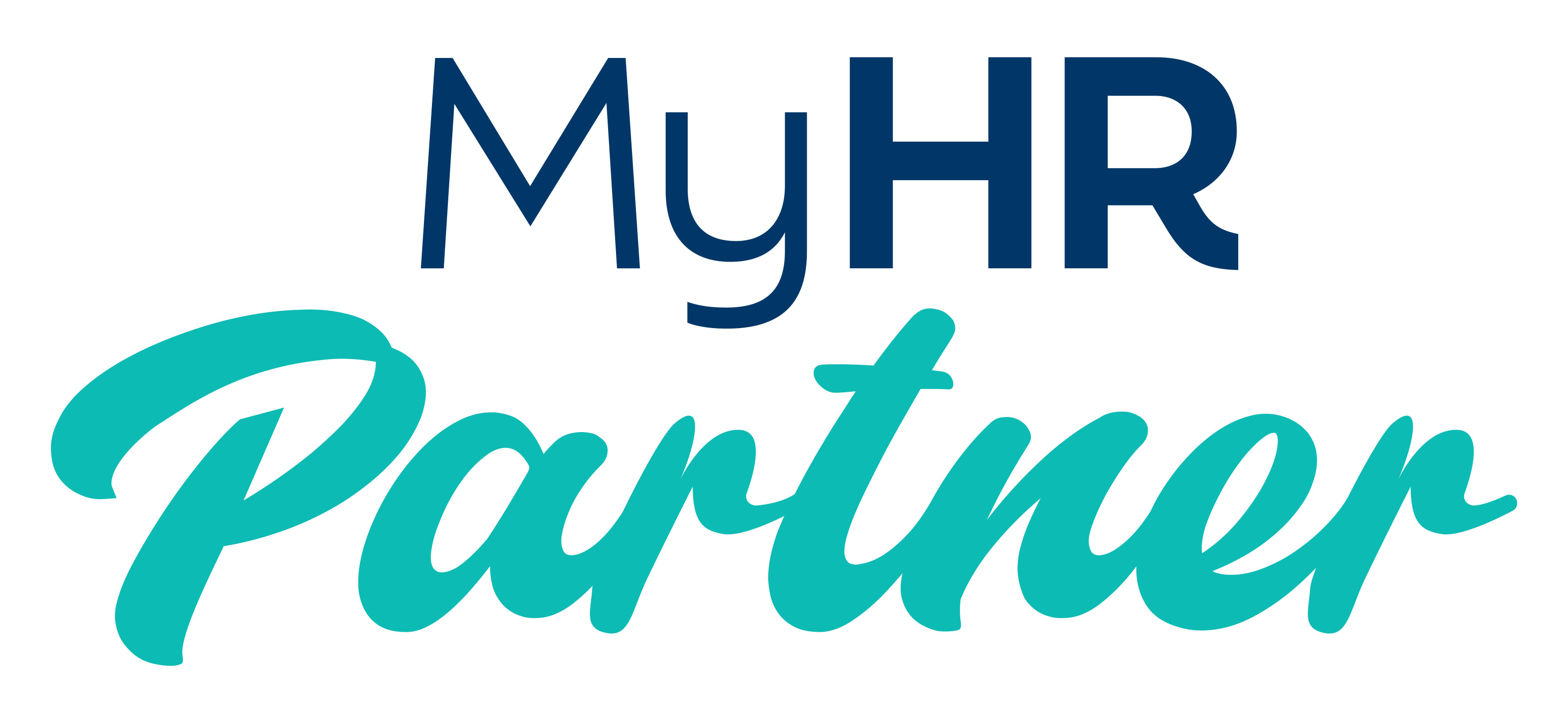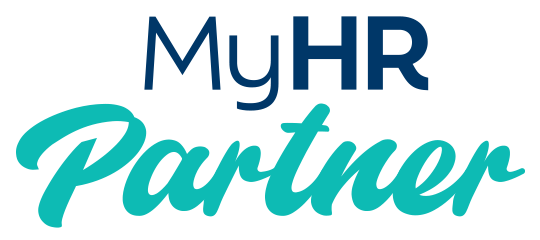Your all-in-one HR toolkit — built for busy Australian small businesses.
When you’re managing your team, the last thing you need is to waste time googling “Fair Work templates” or wondering if you’ve got the latest version of an award or the correct pay rates.
The My HR Partner HR Hub gives you everything you need to manage your people confidently — all in one easy, trusted place.
WHY BUSINESS OWNERS LOVE IT
Saves you hours every week.
No more starting from scratch — get instant access to templates, checklists and guides that are ready to use.
Keeps you compliant.
Every resource is up to date with Fair Work, Award pay guides and the latest legislation.
Reduces stress.
You’ll know exactly where to find what you need — and what to do next.
Includes real-world support.
Join Q&A sessions, webinars and masterclasses with Karen Hillen, your HR partner who actually understands small business life.
Why go searching the web for HR
answers, when you can save time and
money with all your HR resources in
one convenient place.
With the My HR Partner HR Hub,
you can access a wide range of tools
and resources to make managing your
HR responsibilities easier than
ever before.
Discover exactly how to respond
to HR challenges in your business with
our HR Hub Membership. You’ll have
access to our invaluable resources 24/7
and the opportunity to tap into
support from Karen via our Q&A
sessions, master classes & webinars.

Discover exactly how to respond to HR challenges in your business with our HR Hub Membership.
You’ll have access to our invaluable resources 24/7 AND the opportunity to tap into support from Karen via email, Q&A sessions, masterclasses & webinars.
RECRUITMENT
PAYROLL & COMPLIANCE
LEAVE
EMPLOYEE PERFORMANCE
ENDING EMPLOYMENT
HEALTH & SAFETY
What’s inside
Your membership gives you unlimited access to:
Current award links, pay guides, and Fair Work statements.
Practical templates and checklists for recruitment, onboarding, payroll, leave, compliance, performance, ending employment, and safety.
Info sheets and quick-reference guides written in plain English.
Email support for when you need a nudge in the right direction.
Access to every member-only webinar and Q&A replay so you never miss a thing.
The result
No more guesswork. No more frantic late-night Googling.
Just clear, compliant HR guidance — ready whenever you are.
Join the My HR Partner HR Hub
Gain confidence, save time, and manage your team with ease.
Your HR answers are waiting — all in one trusted place.
Our HR Hub Membership also
includes up to date links to awards,
award pay guides, Fair Work Information Statement, Casual Employment
Information Statement, and much more.
Plus, our templates, checklists, and
info sheets cover a range of subjects
to help you manage your team effectively
in areas such as recruitment, payroll
and compliance, leave, employee
performance, ending employment,
and health and safety.
Our Membership offers access
to the resources you need to manage
your team effectively.
$697 / Year
HR questions answered by email
Monthly Q&A sessions
Employee Onboarding Hub
20% discount on HR advice calls
20% discount on employment contracts
20% discount on all other HR services
Plus access to these resources:
• Videos
• Webinars
• HR Template Library
• HR Checklist Library
• HR information
$197 / Quarter
HR questions answered by email
Monthly Q&A sessions
Onboarding Hub not included
20% discount on HR advice calls
20% discount on employment contracts
20% discount on all other HR services
Plus access to these resources:
• Videos
• Webinars
• HR Template Library
• HR Checklist Library
• HR information
WHAT IS INCLUDED IN THE PAID HR HUB?
Monthly subscription inclusion
Direct email HR advice providing quick & easy solutions for straightforward HR questions - a convenient way to get timely expert guidance on matters that aren't too complex. (Limits apply)
Over 60 templates & checklists to help you with payroll & compliance, leave, termination of employment, managing performance, recruitment and health & safety.
Yearly subscription inclusion
Direct email HR advice providing quick & easy solutions for straightforward HR questions - a convenient way to get timely expert guidance on matters that aren't too complex. (Limits apply)
Over 60 templates & checklists to help you with payroll & compliance, leave, termination of employment, managing performance, recruitment and health & safety.
Employee Onboarding Hub - send your contracts and policies online and also integrates with Xero so employee details can be uploaded directly from the information entered by the employee.
WHAT QUESTIONS CAN I ASK IN THE Q&A SESSIONS?
You can ask any HR related questions that need a general answer. If the question is too indepth or is very specific to your business, you may need to book in for one of our discounted HR calls.
WHAT IS THE EMPLOYEE ONBOARDING HUB?
The Employee Onboarding Hub is a platform where you can send your employees their employment contract and they enter all of their details including their payroll information such as their bank account details, Tax File Number declaration and their Superannuation account details.
It integrates with Xero, MYOB and Deputy so it saves you time on data entry.
You can also save employees’ certificates, licences and set reminders for expiry dates.
ARE THE Q&A SESSIONS RECORDED?
No, the Q&A sessions aren't recorded.
HOW DO I GET THE DISCOUNTED HR CALLS, EMPLOYMENT CONTRACTS AND HR POLICIES?
You can order your discounted documents with your special member’s link.

WHAT OTHER RESOURCES ARE IN THE HR HUB?
Webinars, Master Classes & Q& A Sessions
Links to: Awards ~ Award pay guides ~ Fair Work Information Statement ~ Casual Employment Information Statement ~ & more
Templates, checklists and Info Sheets to give you information about a range of subjects to help you manage your
team in relation to:
Recruitment ~ Payroll & Compliance ~ Leave ~ Employee Performance ~ Ending Employment ~ Health & Safety
Our Latest Blog Post

Planning Employee Leave for the Year
Annual Leave Planning for the 2025 Christmas/New Year shutdown: A Guide for Australian Businesses
It’s just over 13 weeks until Christmas.
It's a good time to start planning for the Christmas/New Year period if you shutdown over that time. Determine the specific dates your business will be closed, and communicate this to your employees and clients.
Effective annual leave planning is important for a healthy and productive workplace.
As your trusted HR partner, we’ve put together a guide to help you manage annual leave proactively especially when planning for your Christmas/New Year shutdown.
Plan Ahead for the Christmas/New Year Shutdown:
If your business closes over the Christmas/ New Year period, you need to provide employees with the appropriate written notice as specified in their Award. You need to do this even if you have the information in an employment contract because you have to inform your employees of the dates each year.
It’s also wise to check if employees have enough leave to cover this period. If they don’t, you can explore options like agreeing in writing to take a period of unpaid leave or allowing them to take annual leave in advance. (Regularly checking leave balances when employees apply for leave throughout the year can be good too)
Just be sure to get a written agreement for any leave taken in advance (that puts an employee into a negative balance), outlining that they will repay the value if their employment ends before the leave is accrued. It's also important to understand that you can't force an employee to take unpaid leave, so making sure you come to a written agreement is important.
If you have an employee that is hired after the initial notice of the shutdown has been given to your team, you must give that employee notice as soon as reasonably possible (for example, it's a great idea to let them know as part of their induction, or even in the recruitment process).
Your employees are entitled to be paid for any public holidays during the shutdown period that fall on days they would normally work. This applies even if they have agreed to take a period of unpaid leave.
Why Strategic Leave Planning is Crucial for Your Business
A well-thought-out leave plan benefits both your business and your employees. Here’s why it’s essential:
Avoid Disruptions and Staffing Shortages: Last-minute leave requests can throw a spanner in the works. Planning ahead ensures you have adequate coverage, preventing disruptions to productivity and customer service.
Boost Employee Wellbeing: Regular breaks are vital for preventing burnout and keeping your team engaged and productive. Encouraging planned time off shows you value their wellbeing.
Ensure Compliance: As an employer in Australia, you have obligations under the National Employment Standards (NES) to provide annual leave. Proper planning helps you meet these requirements and ensures your payroll system accurately accrues leave entitlements.
Practical Strategies for Proactive Leave Management
Ready to take control of your leave planning? Here’s our best HR advice for 2025:
Create a Centralised Leave Calendar: A shared calendar, whether it’s a physical whiteboard or a digital tool, provides a clear overview of public holidays, peak periods, and approved leave. This helps employees choose dates that don't clash with critical business operations or when someone else is on leave.
Communicate Policies Early and Clearly: Your HR policy handbook should clearly outline leave policies, including notice periods, any restrictions during busy seasons, and the process for submitting leave requests. This transparency helps prevent misunderstandings and sets clear expectations.
Manage Peak Periods Effectively: Identify the busiest times of the year for your business and plan your staffing accordingly. For example, if you're in the retail sector, it’s best to avoid approving leave during peak holiday shopping seasons.
Be Fair and Consistent: Maintain a transparent and fair process for approving leave requests. Apply policies consistently to all employees to avoid any perception of favouritism. If your policy limits how many people can be on leave at one time, ensure it's applied fairly across the board.
Tools to Streamline Leave Management
You don’t have to manage leave manually. Here are some tools that can simplify the process:
HR and Rostering Software: Cloud-based HR and rostering systems are excellent for tracking and managing leave requests and entitlements automatically.
Spreadsheets: For smaller teams, a well-organised spreadsheet can be a simple and cost-effective way to track leave.
Whiteboard: A leave roster could be displayed in the office on a Whiteboard.
Automated Alerts: Many systems allow you to run regular reports and set up reminders for employees with high leave balances, encouraging them to book some time off.
A Quick Refresher on Annual Leave Entitlements in Australia
The National Employment Standards give details of what annual leave employees are entitled to:
Four weeks of paid annual leave per year for full-time employees.
Four weeks of paid annual leave (pro-rata) for part-time employees, based on their contracted hours.
Annual leave loading for employees covered by specific awards or enterprise agreements - your Award or Agreement will set out the entitlements.
It’s crucial to stay up-to-date with your Award conditions to ensure you remain compliant with all leave loading and Fair Work requirements.
Final Thoughts
Strategic leave planning is all about finding the right balance—ensuring your team gets the rest they need while keeping your business operating smoothly. By adopting these practices, you can create a win-win situation for both your employees and your bottom line.
If you’re struggling to manage leave or other HR challenges, My HR Partner is here to help. We specialise in simplifying people management for businesses across Australia, allowing you to focus on what you do best.
Need expert support with your HR? Contact us today to learn how we can tailor a solution for your business!
We provide HR advice and support. We have trusted partners to assist with any employment law issues
outside of our scope.
More info

Get HR Advice from our HR expert
Our Latest Blog Post

Planning Employee Leave for the Year
Annual Leave Planning for the 2025 Christmas/New Year shutdown: A Guide for Australian Businesses
It’s just over 13 weeks until Christmas.
It's a good time to start planning for the Christmas/New Year period if you shutdown over that time. Determine the specific dates your business will be closed, and communicate this to your employees and clients.
Effective annual leave planning is important for a healthy and productive workplace.
As your trusted HR partner, we’ve put together a guide to help you manage annual leave proactively especially when planning for your Christmas/New Year shutdown.
Plan Ahead for the Christmas/New Year Shutdown:
If your business closes over the Christmas/ New Year period, you need to provide employees with the appropriate written notice as specified in their Award. You need to do this even if you have the information in an employment contract because you have to inform your employees of the dates each year.
It’s also wise to check if employees have enough leave to cover this period. If they don’t, you can explore options like agreeing in writing to take a period of unpaid leave or allowing them to take annual leave in advance. (Regularly checking leave balances when employees apply for leave throughout the year can be good too)
Just be sure to get a written agreement for any leave taken in advance (that puts an employee into a negative balance), outlining that they will repay the value if their employment ends before the leave is accrued. It's also important to understand that you can't force an employee to take unpaid leave, so making sure you come to a written agreement is important.
If you have an employee that is hired after the initial notice of the shutdown has been given to your team, you must give that employee notice as soon as reasonably possible (for example, it's a great idea to let them know as part of their induction, or even in the recruitment process).
Your employees are entitled to be paid for any public holidays during the shutdown period that fall on days they would normally work. This applies even if they have agreed to take a period of unpaid leave.
Why Strategic Leave Planning is Crucial for Your Business
A well-thought-out leave plan benefits both your business and your employees. Here’s why it’s essential:
Avoid Disruptions and Staffing Shortages: Last-minute leave requests can throw a spanner in the works. Planning ahead ensures you have adequate coverage, preventing disruptions to productivity and customer service.
Boost Employee Wellbeing: Regular breaks are vital for preventing burnout and keeping your team engaged and productive. Encouraging planned time off shows you value their wellbeing.
Ensure Compliance: As an employer in Australia, you have obligations under the National Employment Standards (NES) to provide annual leave. Proper planning helps you meet these requirements and ensures your payroll system accurately accrues leave entitlements.
Practical Strategies for Proactive Leave Management
Ready to take control of your leave planning? Here’s our best HR advice for 2025:
Create a Centralised Leave Calendar: A shared calendar, whether it’s a physical whiteboard or a digital tool, provides a clear overview of public holidays, peak periods, and approved leave. This helps employees choose dates that don't clash with critical business operations or when someone else is on leave.
Communicate Policies Early and Clearly: Your HR policy handbook should clearly outline leave policies, including notice periods, any restrictions during busy seasons, and the process for submitting leave requests. This transparency helps prevent misunderstandings and sets clear expectations.
Manage Peak Periods Effectively: Identify the busiest times of the year for your business and plan your staffing accordingly. For example, if you're in the retail sector, it’s best to avoid approving leave during peak holiday shopping seasons.
Be Fair and Consistent: Maintain a transparent and fair process for approving leave requests. Apply policies consistently to all employees to avoid any perception of favouritism. If your policy limits how many people can be on leave at one time, ensure it's applied fairly across the board.
Tools to Streamline Leave Management
You don’t have to manage leave manually. Here are some tools that can simplify the process:
HR and Rostering Software: Cloud-based HR and rostering systems are excellent for tracking and managing leave requests and entitlements automatically.
Spreadsheets: For smaller teams, a well-organised spreadsheet can be a simple and cost-effective way to track leave.
Whiteboard: A leave roster could be displayed in the office on a Whiteboard.
Automated Alerts: Many systems allow you to run regular reports and set up reminders for employees with high leave balances, encouraging them to book some time off.
A Quick Refresher on Annual Leave Entitlements in Australia
The National Employment Standards give details of what annual leave employees are entitled to:
Four weeks of paid annual leave per year for full-time employees.
Four weeks of paid annual leave (pro-rata) for part-time employees, based on their contracted hours.
Annual leave loading for employees covered by specific awards or enterprise agreements - your Award or Agreement will set out the entitlements.
It’s crucial to stay up-to-date with your Award conditions to ensure you remain compliant with all leave loading and Fair Work requirements.
Final Thoughts
Strategic leave planning is all about finding the right balance—ensuring your team gets the rest they need while keeping your business operating smoothly. By adopting these practices, you can create a win-win situation for both your employees and your bottom line.
If you’re struggling to manage leave or other HR challenges, My HR Partner is here to help. We specialise in simplifying people management for businesses across Australia, allowing you to focus on what you do best.
Need expert support with your HR? Contact us today to learn how we can tailor a solution for your business!
We provide HR advice and support.
We have trusted partners to assist with
any employment law issues outside
of our scope.
More info
PO Box 1079
Coolangatta QLD 4225
ABN 30 644 527 015
Get HR Advice from our HR expert








